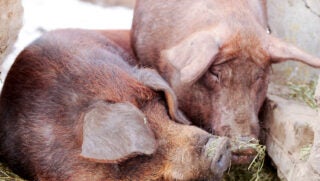The sights and sounds signs of spring are all around — warm temperatures, chirping birds, blooming tulips, sprigs of green grass popping up and, for some, the unwelcome view of weeds.
Weed management strategies for cattle grazing pastures was a recent topic on the Kansas State University Beef Cattle Institute Cattle Chat podcast. A team of beef experts discussed the topic including K-State extension weed scientist and assistant professor Sarah Lancaster, BCI cattle nutritionist Phillip Lancaster, and veterinarian and BCI director Brad White
One of the questions asked to the panel was, “What should cattle producers think about when planning a weed management strategy?”
“Producers need to know what their goal is,” Sarah Lancaster said. “If the goal is to grow high quality hay, then that weed management strategy is different than one that I would give if the plan is to graze cows on it.” She said that by focusing on sources of revenue, producers can develop a plan that makes the most economical sense for them.
Sarah Lancaster added the most important piece of advice she gives regarding weed control is to not overgraze the pastures. “Avoid overgrazing because it is important to keep the forages healthy, and if the grass is stressed, the weeds will establish in the weak spots in the pasture,” she said.
When the green grass first starts sprouting, Phillip Lancaster said some producers are often tempted to turn out the cattle for grazing. His advice: “Don’t do it.”
He continued, “With a perennial grass that grows from the roots, it is using its winter storage to grow those first leaves, and if cows are turned out too soon and those first leaves are grazed off it will actually hurt the overall grazing forage production for the spring.” Depending on the grass type, Phillip recommended the stubble height on planted grasses to be 5-6 inches tall before grazing, and 8-10 inches tall for native grasses.
Along with avoiding overgrazing, Sarah Lancaster recommended producers take soil samples from their pastures every 3-4 years and have them tested in a lab.
“Producers should work with their lab to see the preferred sample depth. But as to how many samples to provide, I recommend sampling at least 15 locations in the field for a good representation of the pasture,” she said.
The sample results will show the amounts of pH, nitrogen and phosphorus is in the soil. “Soil changes slowly over time so this imbalance can be missed,” Sarah said. Knowing the soil makeup helps producers and their agronomy consultants create a strategy for timely fertilizer applications.
She added that not all weeds are bad for producers. “Some weeds, like ragweed, have good nutritional value and can be grazed by cattle. With annual weeds if you deplete the seed bank, existing plants are easier to take care of than perennial weeds in which you have to kill the root.”
To hear more on this topic, listen in to the BCI Cattle Chat podcast online.


